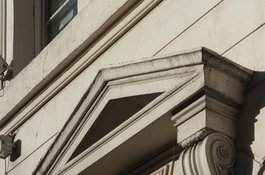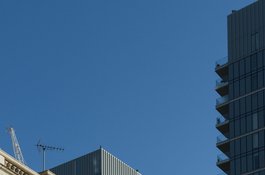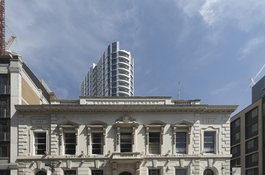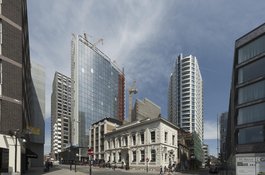Conservation and Restoration 1997
Contributed by cliveraymond on Feb. 19, 2018
In 1997 I was working on a self-employed basis with a conservation company which was a sub-contractor on the project. We were responsible for all the exterior work to the former Eastern Dispensary, but to get to our scaffold we had to climb out of a window on the first floor, and therefore we had a good view of the original decoration within the dispensary dating from the 1940’s when it was an entertainment centre for the armed forces and others. Having previously studied History of Medicine at the Wellcome Institute, I was particularly concerned when alterations were carried out to the building during the restoration. These would result in a different aspect to the building from what the patients would have known when the dispensary was in use. We were told that the exterior alterations would reflect the nineteenth century engraving in "The Illustrated London News". However, nobody could say whether this design, which predated the building's construction, was fully realized.
During restoration in the late 1990s, the heavy cornice was added to the exterior. Careful examination failed to show any archaeological evidence of there having been a cornice. If it fell off, or was taken down during the war, there were no signs of this. Quoin stones were supplied on pallets and affixed to all available corners on the upper storey. Also, mouldings were supplied as per the upper left window in the 1967 photo, and fixed around all the remaining unadorned windows on that level. In effect, details that existed on the original private residence which was the core of the building were repeated all around.
To begin with, my work consisted in the mechanical cleaning off of deep deposits of black sulphation prior to an overall Joss clean. Sulphation was very deep and solid in the scrolls around the windows and the scallop shell above the side door. We had to we had to cart the bags of powder up the inside and out of the window. After cleaning, my job was to repair cracked and missing cement render, including building up of missing letters/ numerals at the top of the building.
I remember one particular day when a passing off-duty building safety inspector looked in and was so horrified by the health and safety issues with work inside the building that he closed it down. We were all turned to for a general clean-up and hazard removal, while some people were sent away to get safety boots.
A few years later, I went in to the building after its conversion into a pub and recommended to the staff in charge that some sort of story board was needed. Otherwise the significance of the building would be totally lost on people who came in from outside East London. Needless to say, the layout of the interior was greatly altered to create the pub.



